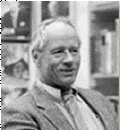Nostalgia
Have Americans slid backward since the sunny, prosperous years after World War II, as so many feel? To find out, an English-born historian compares our recent past with earlier times, and, in the process, learns something about our likely course into the next century.
The world about us is strewn with relics that are quietly eloquent of the struggle that ended half a century ago.
America looked good to a high school senior then, and that year looks wonderfully safe to us now, but it was a time of tumult, and there were plenty of shadows, along with the sunshine.
Revisiting the seas where American carriers turned the course of history, a Navy man re-creates a time of frightful odds and brilliant gambles.
In 1820, their daily existence was practically medieval; 30 later, many of them were living the modern life.
New Yorkers recall 1939 as the year of the great World’s Fair in Flushing Meadow. But that’s just more Eastern provincialism. Take a look at what was going on in San Francisco.
“Why hasn't the stereotype faded away as real cowboys become less and less typical of Western life? Because we can't or won't do without it, obviously.”
50 years ago, these rough-and-ready tin soldiers were sold from bins cheap and by the handful. Today, collectors are seeking them for their bright, simple vitality.
A lot of people still remember how great it was to ride in the old Pullmans, how curiously regal to have a simple, well-cooked meal in the dining car. Those memories are perfectly accurate, and that lost pleasure holds a lesson for us that extends beyond mere nostalgia.
Sometimes life in the past really was better
A collection of little-known early-twentieth-century photographs of St. Louis recalls the author’s unfashionably happy childhood
Animals a-coming two by two: Up went the lid and you could stuff them in, Noah and all. Or you could throw them at Brother. A toy is pretty adaptable.





